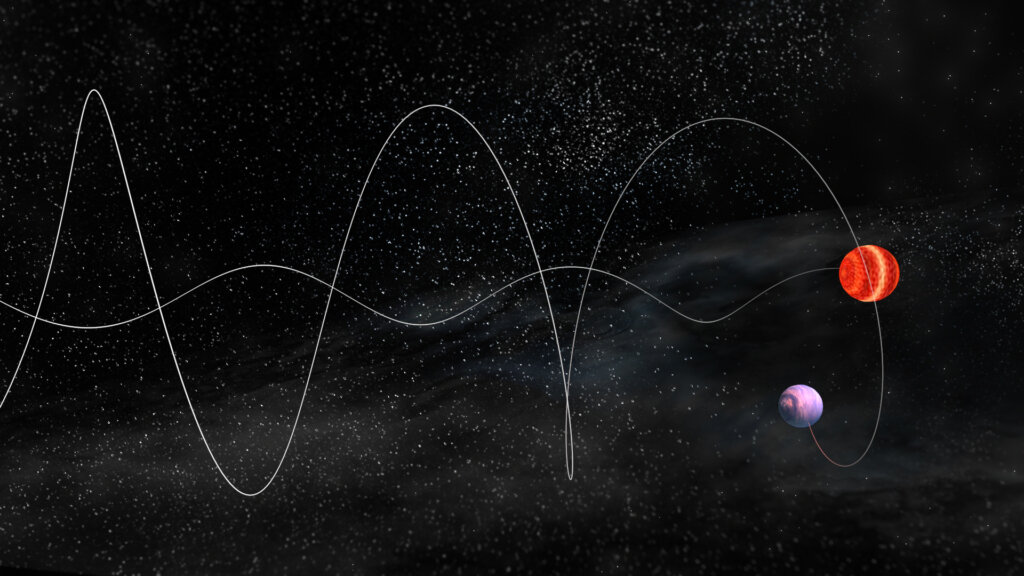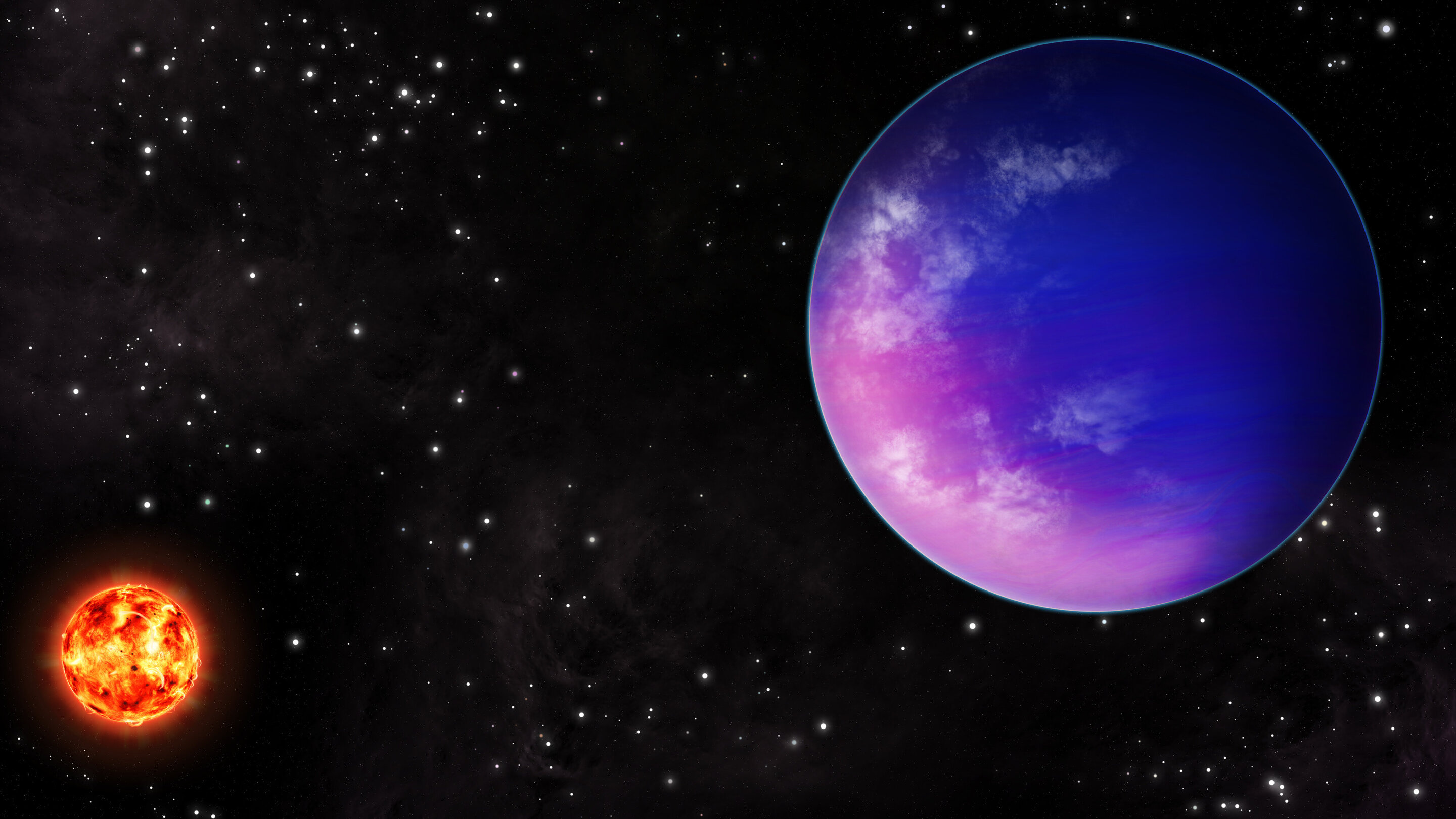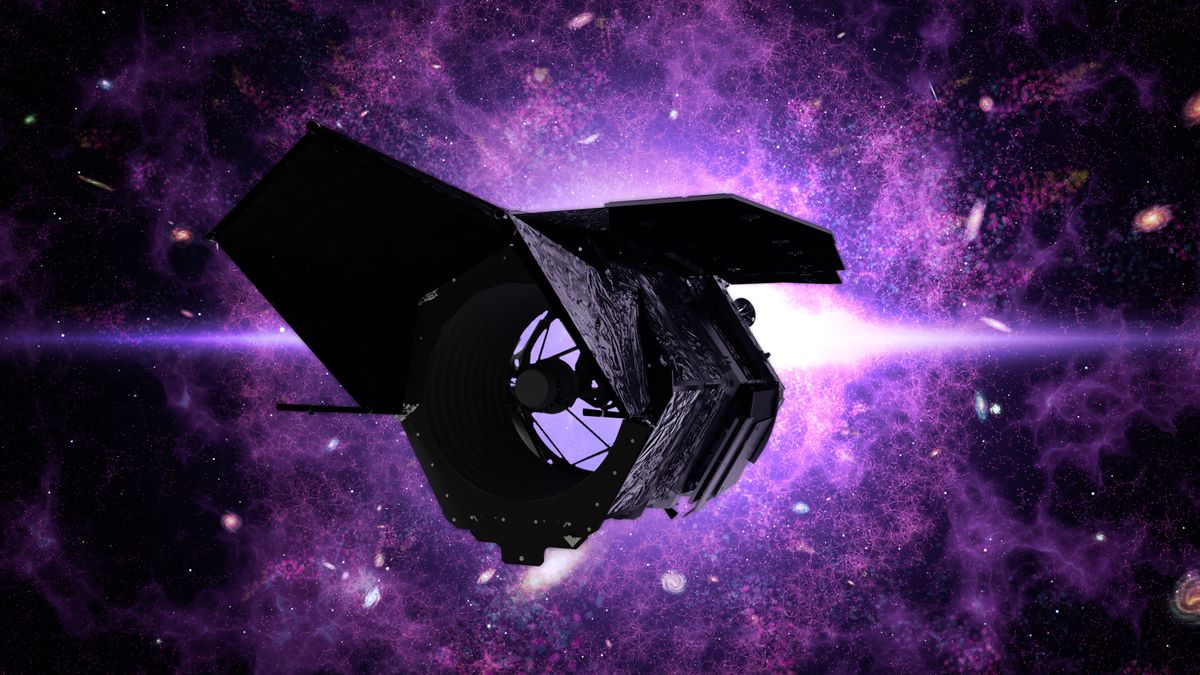
This technique, called the astrometric technique, is expected to be particularly good for detecting Jupiter-like planets in orbits distant from the star. This is because when a massive planet orbits a star, the wobble produced in the star increases with a larger separation between the planet and the star, and at a given distance from the star, the more massive the planet, the larger the wobble produced.
Starting in June of 2018 and continuing for a year and a half, the astronomers tracked a star called TVLM 513-46546, a cool dwarf with less than a tenth the mass of our Sun. In addition, they used data from nine previous VLBA observations of the star between March 2010 and August 2011.
Other things to check out:
ALMA captures stirred-up planet factory -- ScienceDaily
Planet-forming environments can be much more complex and chaotic than previously expected. This is evidenced by a new image of the star RU Lup, made with the Atacama Large Millimeter/submillimeter Array (ALMA).
All planets, including the ones in our Solar System, are born in disks of gas and dust around stars, so-called protoplanetary disks. Thanks to ALMA we have stunning high-resolution images of many of these planet factories, showing dusty disks with multiple rings and gaps that hint at the presence of emerging planets. The most famous examples of these are HL Tau and TW Hydrae.
Surprisingly dense exoplanet challenges planet formation theories

Slightly smaller than Neptune, K2-25b orbits an M-dwarf star—the most common type of star in the galaxy—in 3.5 days. The planetary system is a member of the Hyades star cluster, a nearby cluster of young stars in the direction of the constellation Taurus. The system is approximately 600 million years old, and is located about 150 light-years from Earth.
Planets with sizes between those of Earth and Neptune are common companions to stars in the Milky Way, despite the fact that no such planets are found in our Solar System. Understanding how these "sub-Neptune" planets form and evolve is a frontier question in studies of exoplanets.
NASA's Nancy Grace Roman space telescope will send the hunt for exoplanets into warp speed | Space

A new NASA space observatory could push planet-hunting forward at warp speed by gathering data up to 500 times faster than the venerable Hubble Space Telescope does.
The Nancy Grace Roman Space Telescope (formerly known as the Wide-Field Infrared Survey Telescope or WFIRST) passed a key ground-system design review this month, according to NASA . Roman, as the telescope is called in short, relies on technology that was originally built for spy missions on Earth . Instead, after its launch in the mid-2020s, Roman will spy on exoplanets across the galaxy, as well as many other cosmic phenomena.
In case you are keeping track:
Bad Astronomy | Astronomers theorize planets forming around supermassive black holes

We know that planets like the ones in our solar system form in flat disks of gas and dust called protoplanetary disks . We can actually see that happening all over the galaxy.
But a team of astronomers wondered if that were the only place they could be born. So they figured why not see if planets can form in the very worst place you can imagine in the entire Universe : Near a supermassive black hole .
No, seriously, stop laughing. It's at least theoretically possible, and the astronomers dubbed them blanets .
Starwatch Blog: A handful of planets visible for the first week of August | WJHL | Tri-Cities
Starwatch Blog for the week of August 3-9, 2020
Five planets will be visible this month, here is a look at where you can find them this week.
Jupiter and Saturn
This dynamic duo continues to shine shortly after sunset every night. These planets rise in the southeast, with a Full Moon tonight right behind them. They stay out all night as they work their way towards the southwest. Jupiter is the brighter of the two.
Venus
The brightest object in the sky, behind the moon and the sun, is Venus! Venus will rise in the east sky in the middle of the night. You can get a good view before sunrise.
We Have Ploonets. We Have Moonmoons. Now Hold Onto Your Hats For... Blanets

It's easy to think of black holes as voracious destruction machines, slurping up everything in their immediate vicinity. But that's not always the case. The environments around active supermassive black holes are complex, and last year, a team of astronomers showed that there's a safe zone around each supermassive black hole in which thousands of planets could be orbiting .
Now, the team led by Keiichi Wada of Kagoshima University in Japan has given a new name to these black hole planets - "blanets", which is just delightful - and worked out how these blanets might form from the grains of dust swirling around the black hole.
Happening on Twitter
VLBA finds planet orbiting small, cool star @AAS_Publishing https://t.co/exd2H6GNhT physorg_com Tue Aug 04 16:14:36 +0000 2020

No comments:
Post a Comment